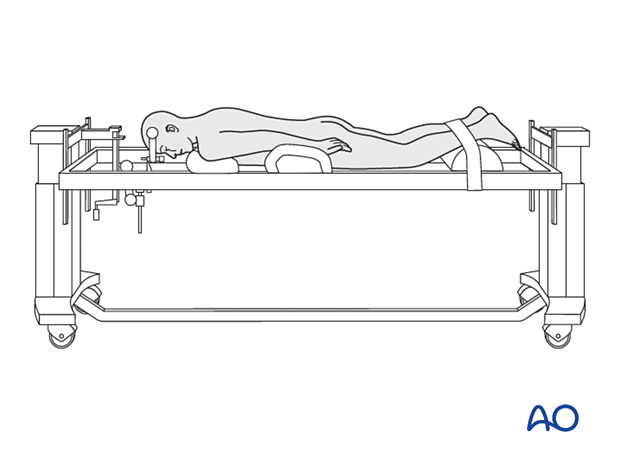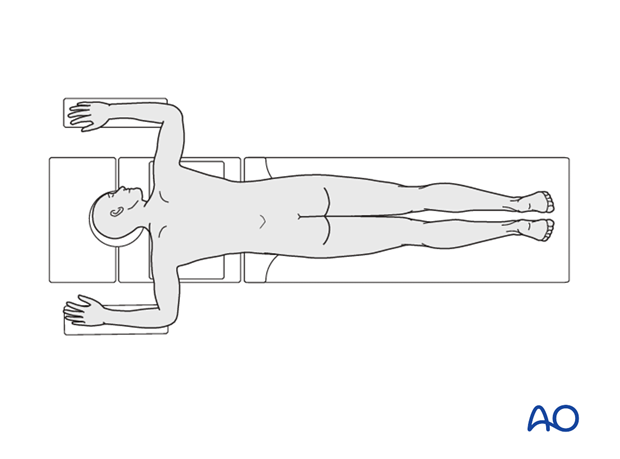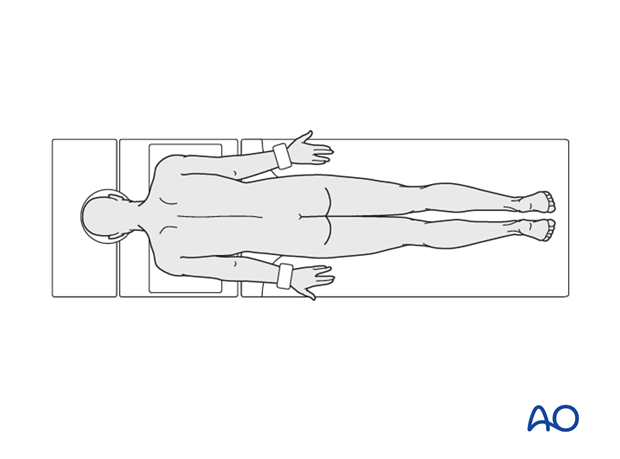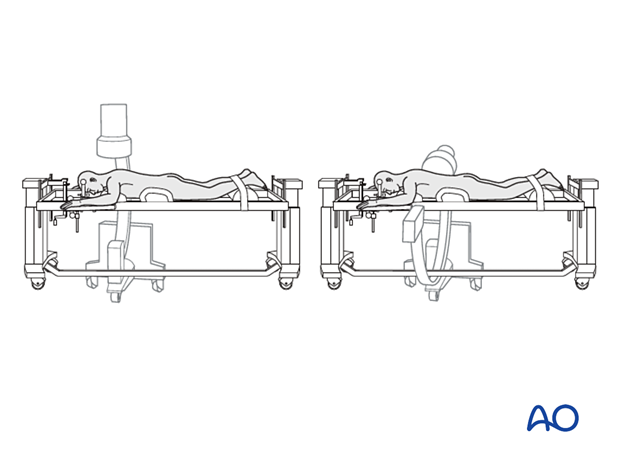Prone position for approaches to T1–S5
1. Positioning for midline approach (posterior procedures)
The patient is positioned on a radiolucent table, prone on two horizontally placed padded bolsters (one at the level of the sternum and the other at the level of the anterior iliac spine) or on a frame.
- The abdomen should hang free to avoid increased intraabdominal pressure and to prevent excessive bleeding
- Adequate padding needs to be provided to elbows and knees to avoid pressure sores
- The head is rested on a Mayfield three-pin head holder to avoid pressure on the eyes
Make sure that there are adequate personnel to receive and turn the patient from a supine to a prone position on the operating table if needed.

For surgery that starts below T8, the arms can be abducted and should rest comfortably in a 90° position of the shoulder and elbow.

For surgery that extends above T8, the arms are adducted at the shoulder, extended at the elbow, and strapped to the sides of the body. This makes it easier to use the image intensifier for the visualization of thoracic vertebrae.

2. Anesthesia
General anesthesia with endotracheal intubation is required.
In patients with severe spinal cord compression, it is essential to avoid hypotensive anesthesia, and the mean arterial blood pressure should be maintained above 80 mmHg.
3. Preoperative antibiotics
Antibiotics should be administered well prior to the incision and also at intervals during the procedure or when the blood loss exceeds 2 liters.
A cephalosporin antibiotic with good Gram-positive coverage is generally recommended.
4. Spinal cord monitoring
Spinal cord monitoring is optional and should be considered in cases with severe spinal cord compression or when spinal cord manipulation is anticipated.
5. Intraoperative imaging
The incision can be planned based on the lateral X-ray.
An intraoperative CT scan can be used together with spinal navigation. This can assist in instrumentation placement, osteotomy cuts, and tumor delimitation.














